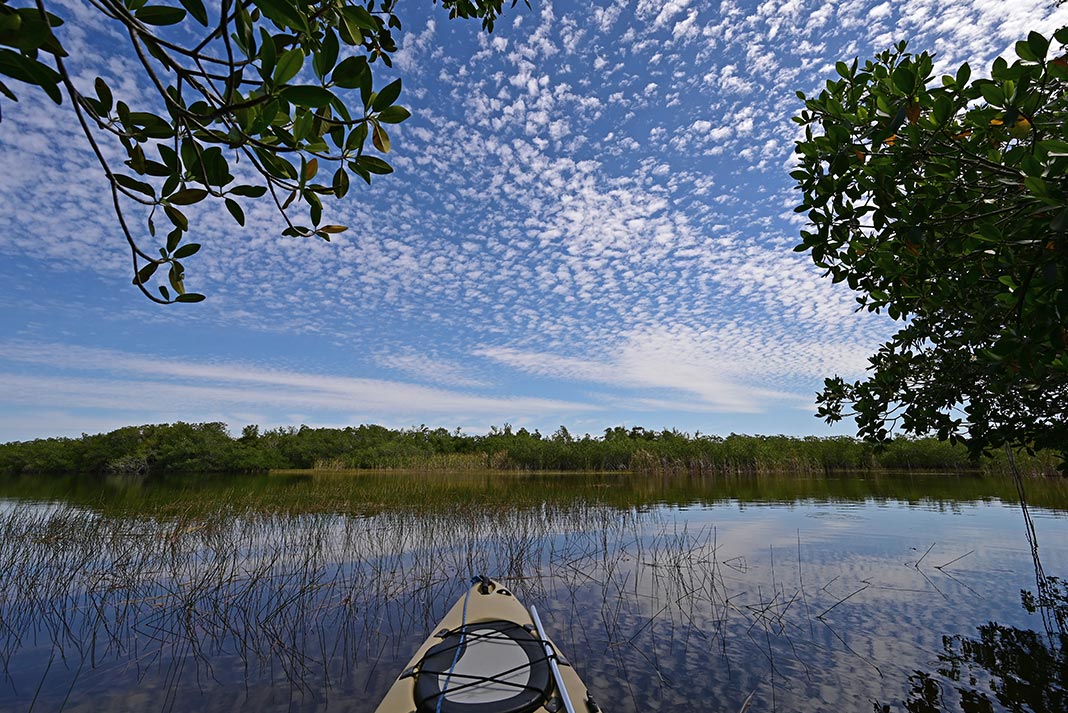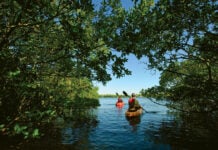The secret is officially out. Tampa, Florida is one of the World’s Great Places, according to Time Magazine. But the locals have long known kayaking in Tampa is world-class.
Life for many of us on the Sun Coast revolves around the water. The bays, rivers, lakes, springs and Gulf of Mexico all add up to a paddler’s paradise.
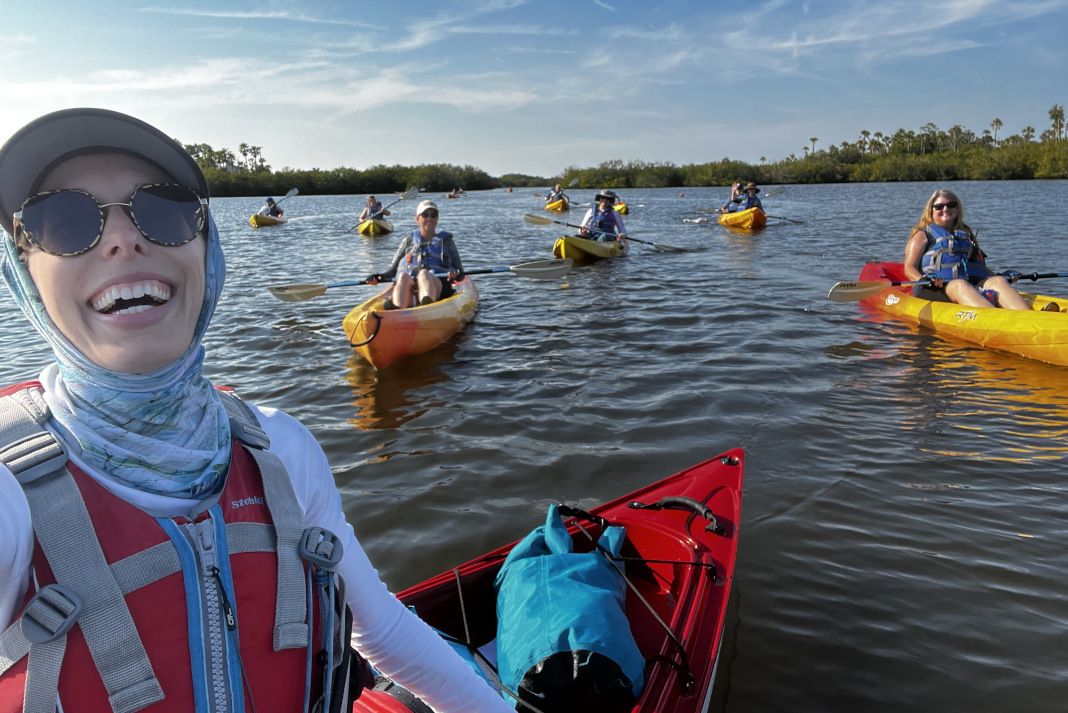
As a local kayaking guide in Tampa, I spend hours exploring the surrounding waterways. On outings, we pass through open water where we watch dolphins hunt; narrow spaces where critters crawl on nearby branches; and rivers with, of course, alligators.
Consider this your must-paddle guide for your next trip to Tampa Bay.
3 Top Spots For Kayaking, Canoeing, And Standup Paddleboarding In Tampa
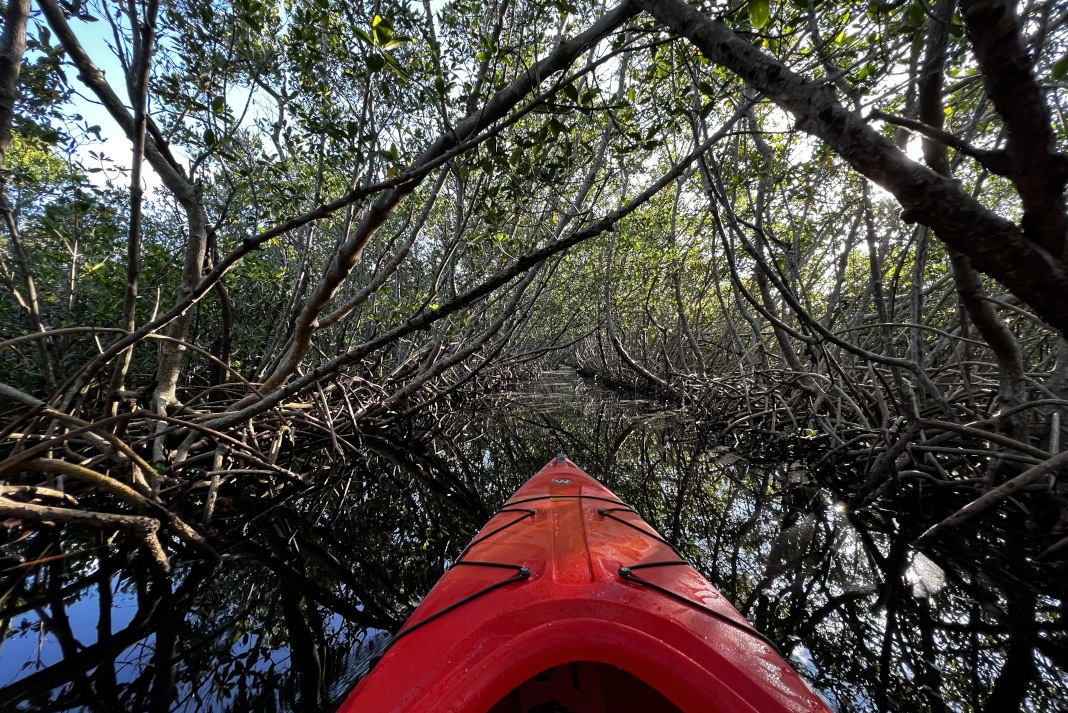
Weedon Island Preserve
Immerse yourself in the mangroves by visiting the tight tunnels at Weedon Island Preserve in St. Petersburg.
The expansive preserve, 20 minutes away from downtown Tampa, has a rich history. Archaeological work continues today to learn about the culture and life of the people who lived in the area thousands of years before us. And, as recently as the early 20th century, Weedon Island was home to a speakeasy, movie studio, and an airport, but you wouldn’t know that by visiting the pristine preserve now.
Inside the mangrove tunnels, you’ll get an eye-level look at the tangled web of red mangrove prop roots, where crabs are often spotted scurrying away from human visitors.
These mangrove tunnels aren’t naturally occurring; they were created in the 1950s in an effort to control the mosquito population. However, if you visit the preserve around sunrise or sunset, you’ll discover the effort failed, and mosquitos remain.
Dolphins, manatees, stingrays, and even small sharks can be seen on other parts of the paddle trail, especially near the boat channel.
Kayakers and paddleboarders will also be able to sneak glimpses of downtown Tampa and St. Petersburg across the bay.
Planning Your Paddle
Plans to paddle at Weedon Island should be based on the tide. At least a foot of water is needed to get through the mangrove tunnels. Otherwise, you’ll have to trudge through the not-so-pleasant mangrove muck.
While there is no fee to enter the preserve, spots near the public launch fill up fast. If you don’t snag one, you’ll have to park in the main lot and walk about 10 to 15 minutes.
Thankfully, there is another option. The vendor ECOmersion is much closer to the main lot and sometimes allows folks with their own kayaks and paddleboards to drop in if it’s not too busy. Keep in mind beginning your adventure from ECOmersion’s launch will put you farther from the start of the paddle trail, but many people opt for added time on the water rather than hauling their gear on land.
The trail is about four miles long (roughly five from ECOmersion’s launch) and has markers numbered one to 38.
You’ll encounter some of the tightest tunnels between markers six and nine. Two-way traffic looks impossible, but there is space.
You may be tempted to hold onto mangrove roots as you squeeze to one side of the tunnel to let others pass by. I always caution paddlers to look where you grab first: sharp oysters are sometimes exposed based on the tide.
If you’d like to forgo bringing your gear, you can reserve kayaks, standup paddleboards, and canoes through ECOmersion. Booking online ahead of time is preferred. A two-hour self-guided paddle will allow enough time to see some mangrove tunnels. However, if you want to complete the full paddle trail, four hours is recommended.
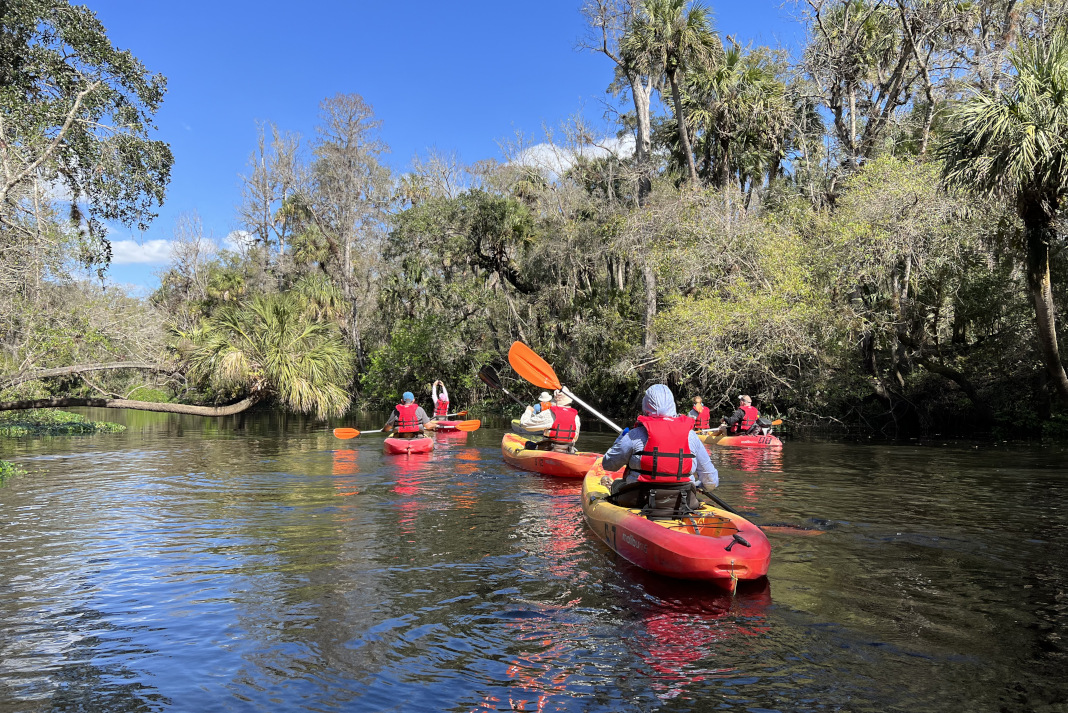
Hillsborough River State Park
Class II river rapids are an unusual find in Florida. But you can find some for kayaking in just 20 minutes northeast of Tampa at Hillsborough River State Park.
Beautiful bald cypress trees will frame your journey downriver. Be sure to wave to hikers on nearby trails and look for alligators basking on the banks. Turtles will likely plop into the water as you pass by.
While you might find yourself focused on the natural beauty above you and the wildlife on either side, remember to look down. The water is so clear in some areas that you can see straight to the bottom, where fish fight the current to continue upstream.
Planning Your Paddle
Hillsborough River State Park gets especially busy on weekends, holidays, and during the summer. Consider arriving early in the day to avoid the crowds and the heat.
Admission is $4 if you are riding solo in your vehicle. Otherwise, you’ll pay $6 per vehicle for up to eight people.
While there are multiple areas to launch, the most accessible spot to get on the water is where the vendor FloVibez operates.
Water levels fluctuate based on the time of year. During the dry months, you could find yourself scraping on limestone outcrop if you’re not carefully paying attention.
I always recommend staying in the center of the river, away from brushy areas, as much as possible because we don’t want to spook the full-time residents of the river.
While it can be intimidating to encounter alligators, the likelihood of being seriously injured in an unprovoked attack is extremely unlikely. In fact, the Florida Fish and Wildlife Conservation Commission points to data showing a roughly one in 3.1 million chance of that happening.
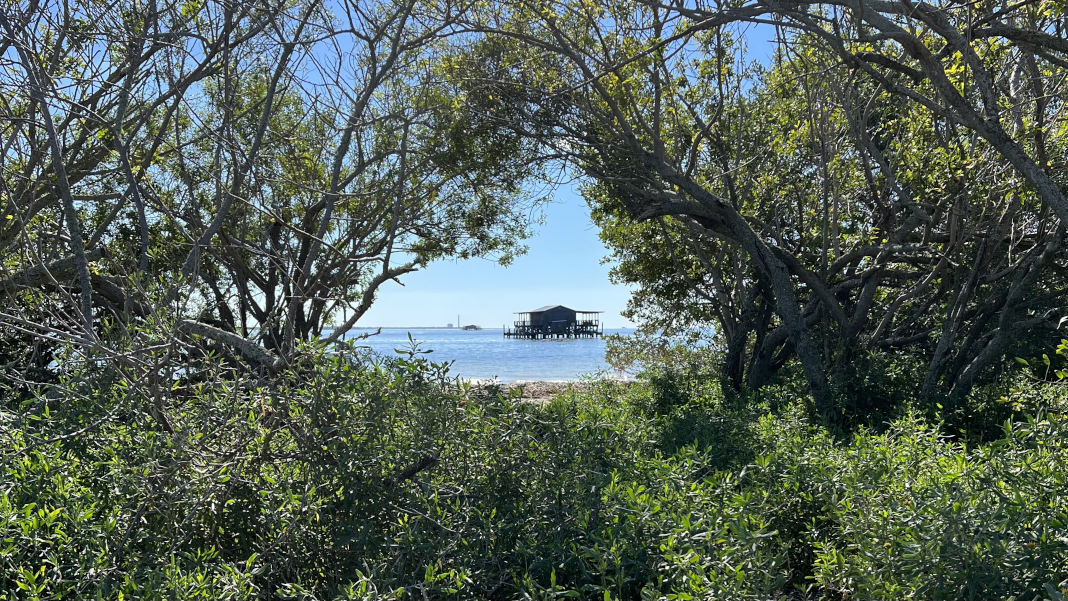
Historic Stilt Houses and Durney Key
Despite all odds, relics of “Old Florida’” still stand in the Gulf of Mexico. A rare cluster of stilt houses can be reached by kayaking the off the coast in Port Richey, 50 minutes northwest of Tampa, and you can see them by kayak.
The original stilt houses, built between 1916 and 1918, were used by local fishermen. Decades ago, there were more than 20, but only nine now remain.
Durney Key, a small island just east of the stilt houses, is the perfect place to pull your kayak ashore and rest mid-journey. Explore the island, eat lunch, enjoy the views, and go swimming before returning back to reality.
Planning Your Paddle
Brasher Park in Port Richey is a seamless spot to start your journey. From here, it’s nearly a straight shot west to Durney Key.
As you leave Boggy Bay and paddle into the open water, keep a close eye on the boat channel just east of the island. It can feel like a game of Frogger at peak times on weekends, so be sure to have your head on a swivel. Because of the boat traffic, this adventure is best for intermediate to advanced paddlers.
If you’re looking for an extended journey or want to explore a more protected area first, you can instead drop in at nearby Werner-Boyce Salt Springs State Park. The state park costs $4 per vehicle for up to eight people. There is no ranger station, so you must pay at the kiosk or online.
The launch at Werner-Boyce is used by individuals, as well as Salty Dog Kayak Rentals. The rentals are typically available Thursday through Sunday from 9 a.m. to 4 p.m. However, dates and times could be adjusted based on the tide.
Four hours are recommended for the journey to Durney Key and the Pasco County stilt houses because it requires about four miles of paddling from the state park.
These three destinations are sure to make your trip worthwhile. Though once you go kayaking in Tampa, you’ll discover they are just the beginning of the natural treasures here.
Sarah Phinney leads kayaking tours all across the Tampa Bay area. You can find more information about upcoming paddles at Sarah’s Outdoor Adventures.


